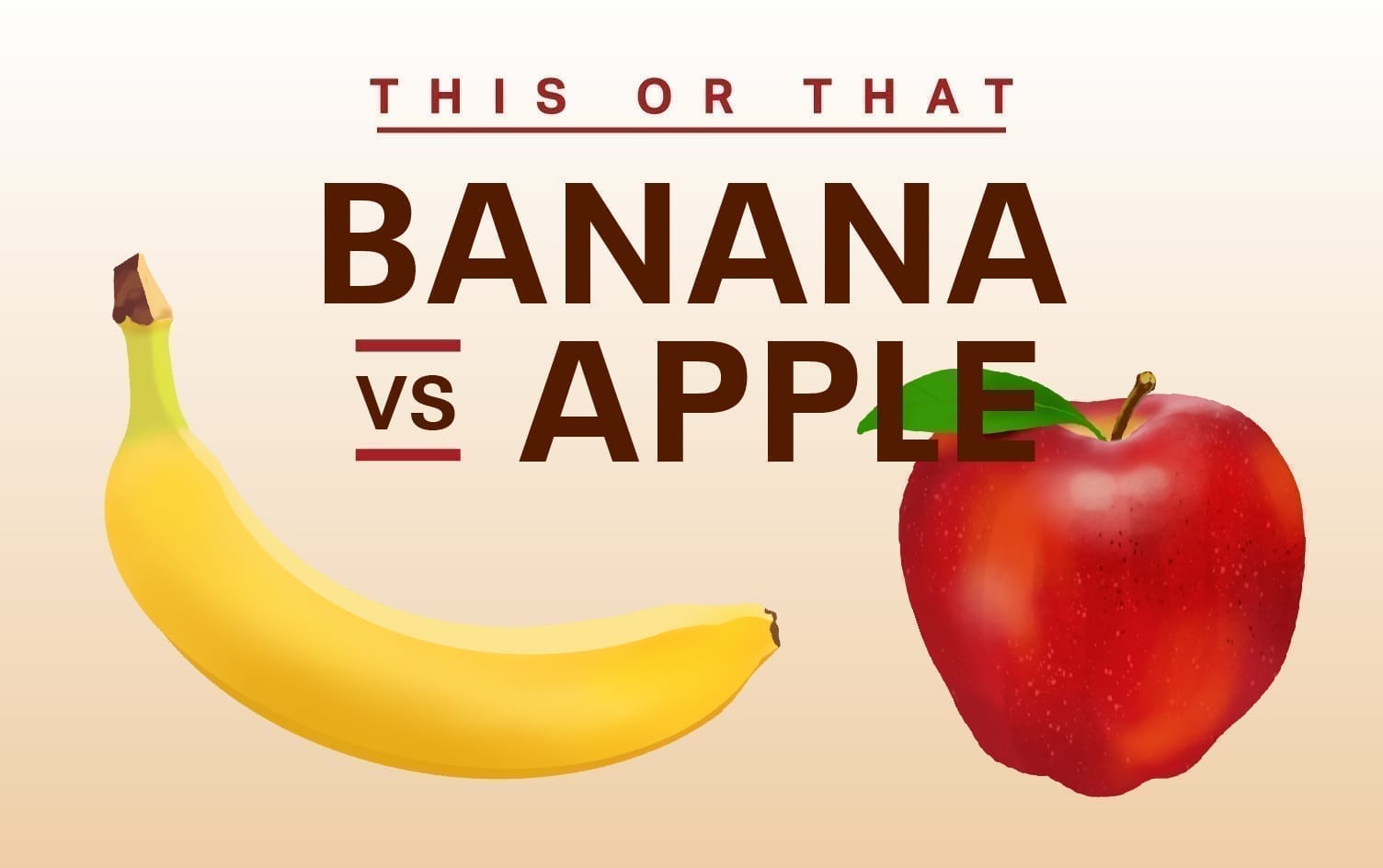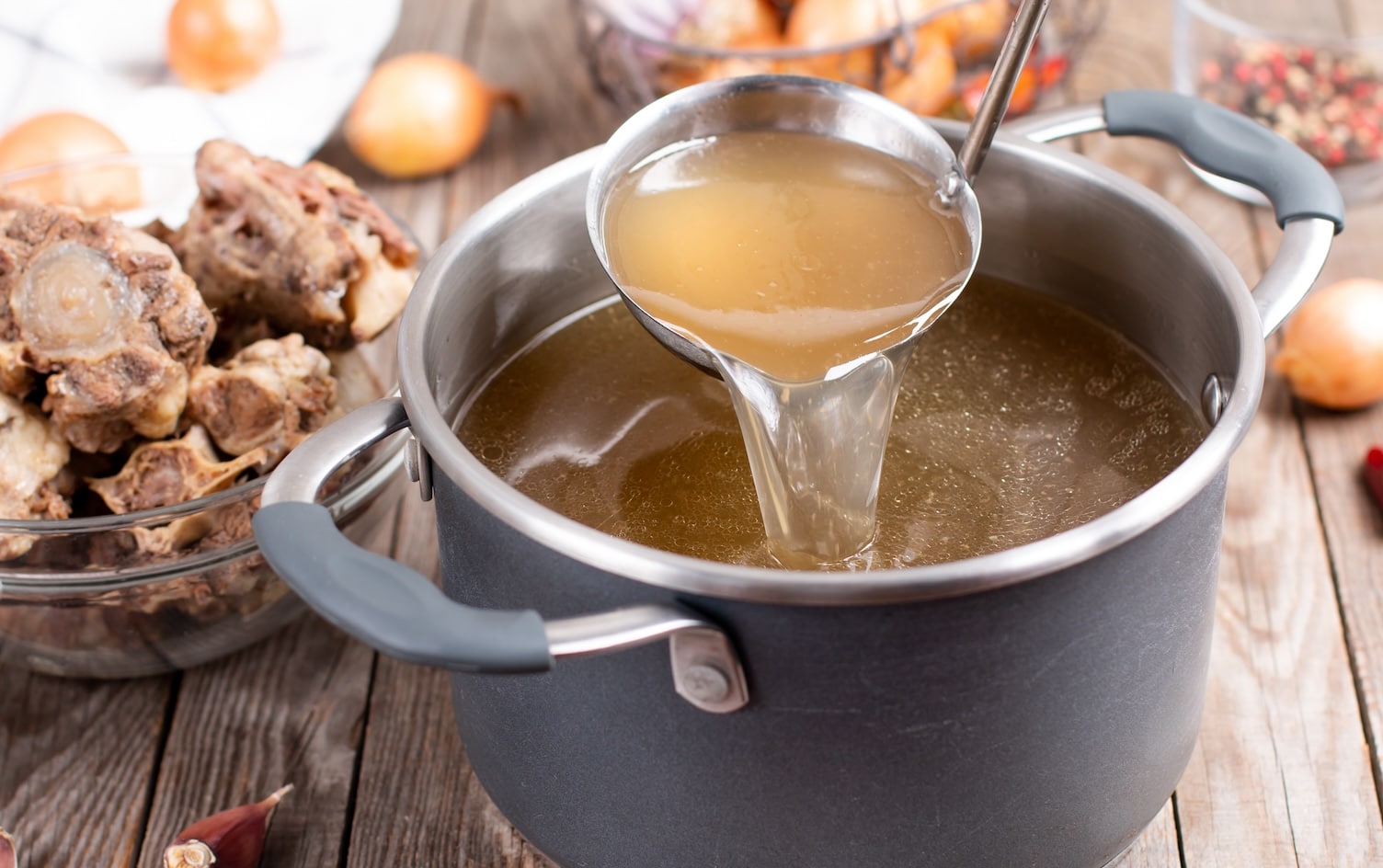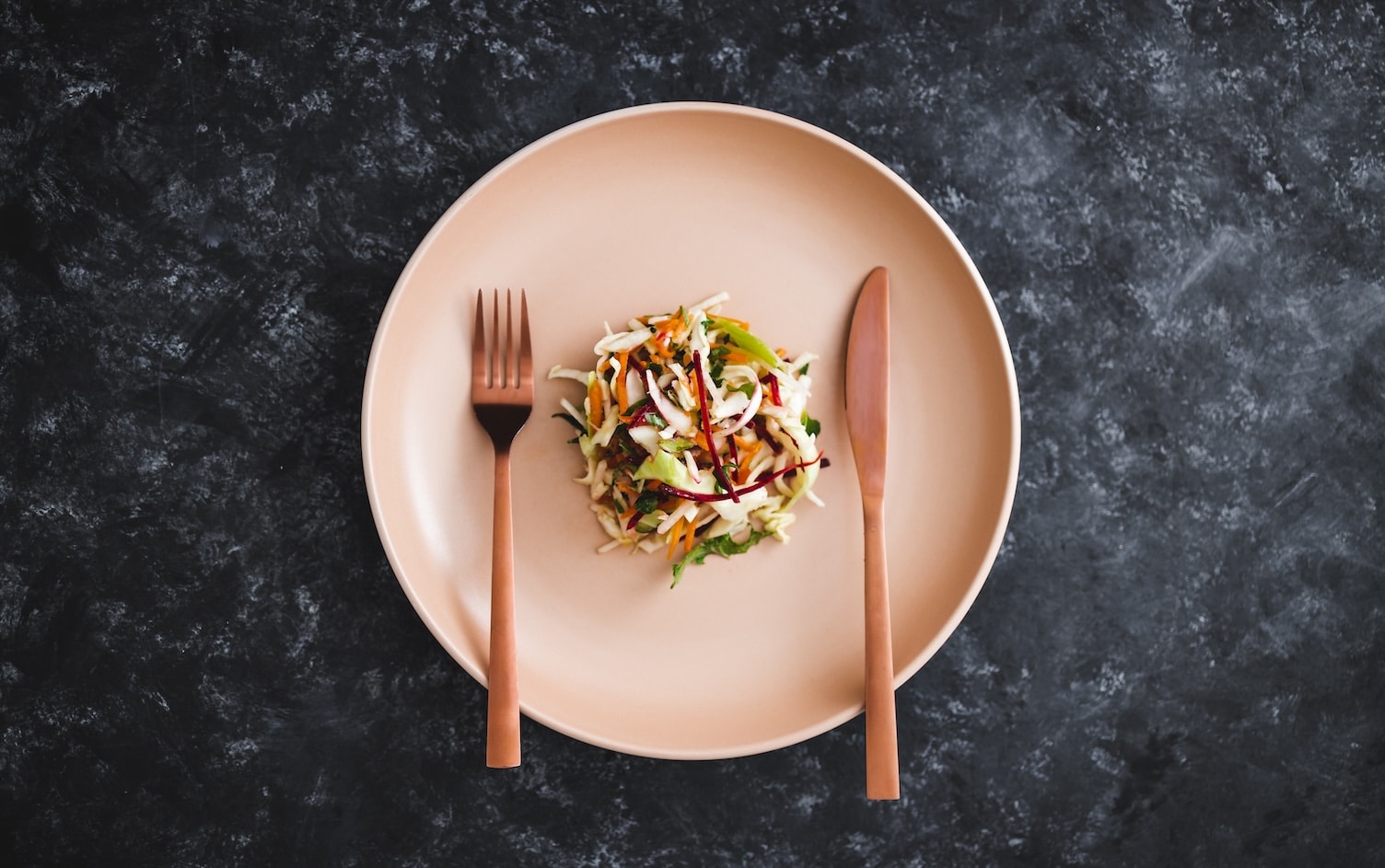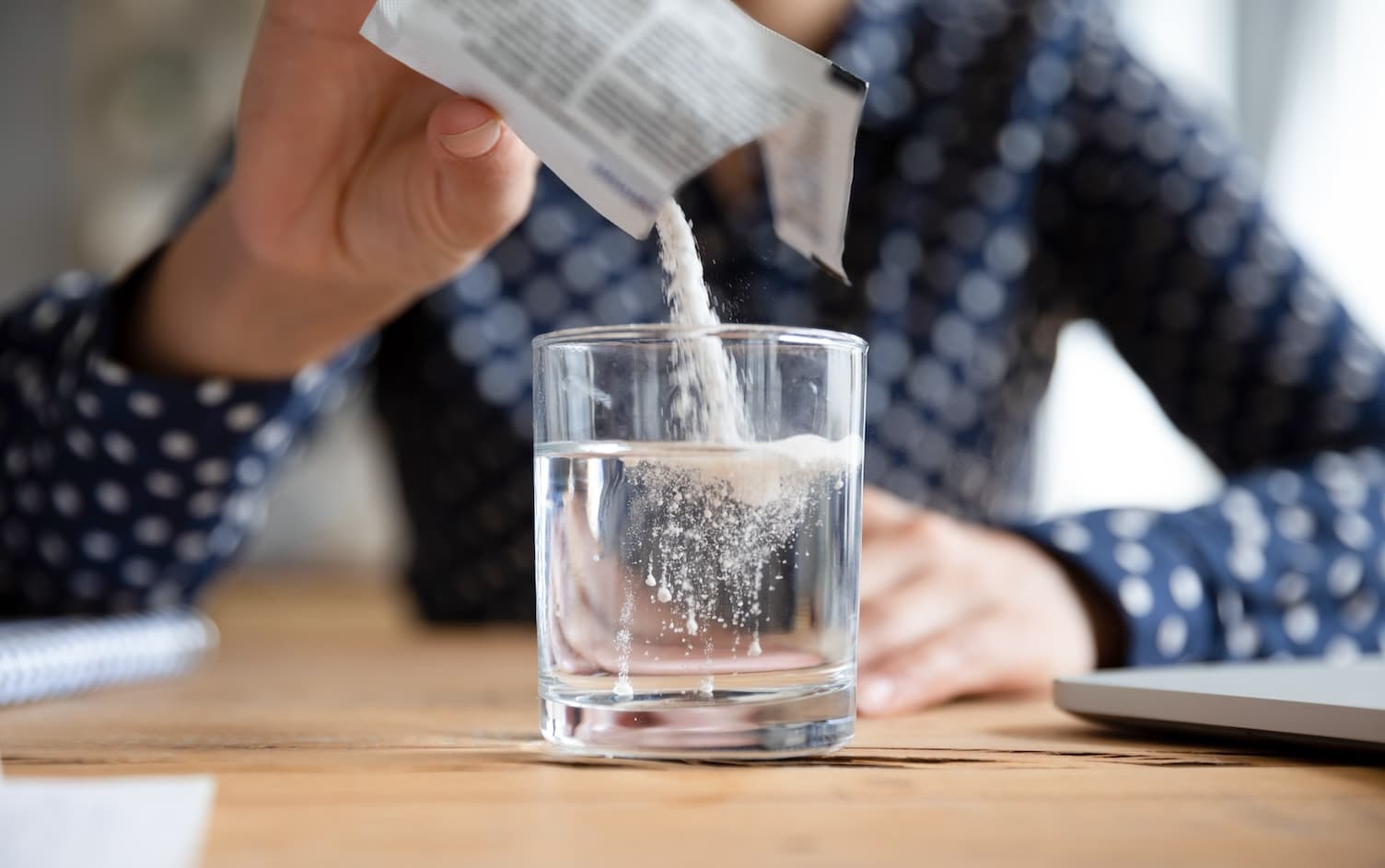Apples and bananas are probably the most accessible fruits around, but if you had to choose, which is healthier? You’ve likely heard a big part of improving your diet is adding more color to your plate, especially in the form of fruits and veggies. However, fruits are often mistakenly vilified as being too high in sugar or carbs. What’s missing here is the fact some sugar in the diet is OK, and fruits come packaged with other important nutrients like fiber, vitamins and minerals.
That said, if you’re choosing between two popular fruits like apples and bananas, here’s what you need to know:
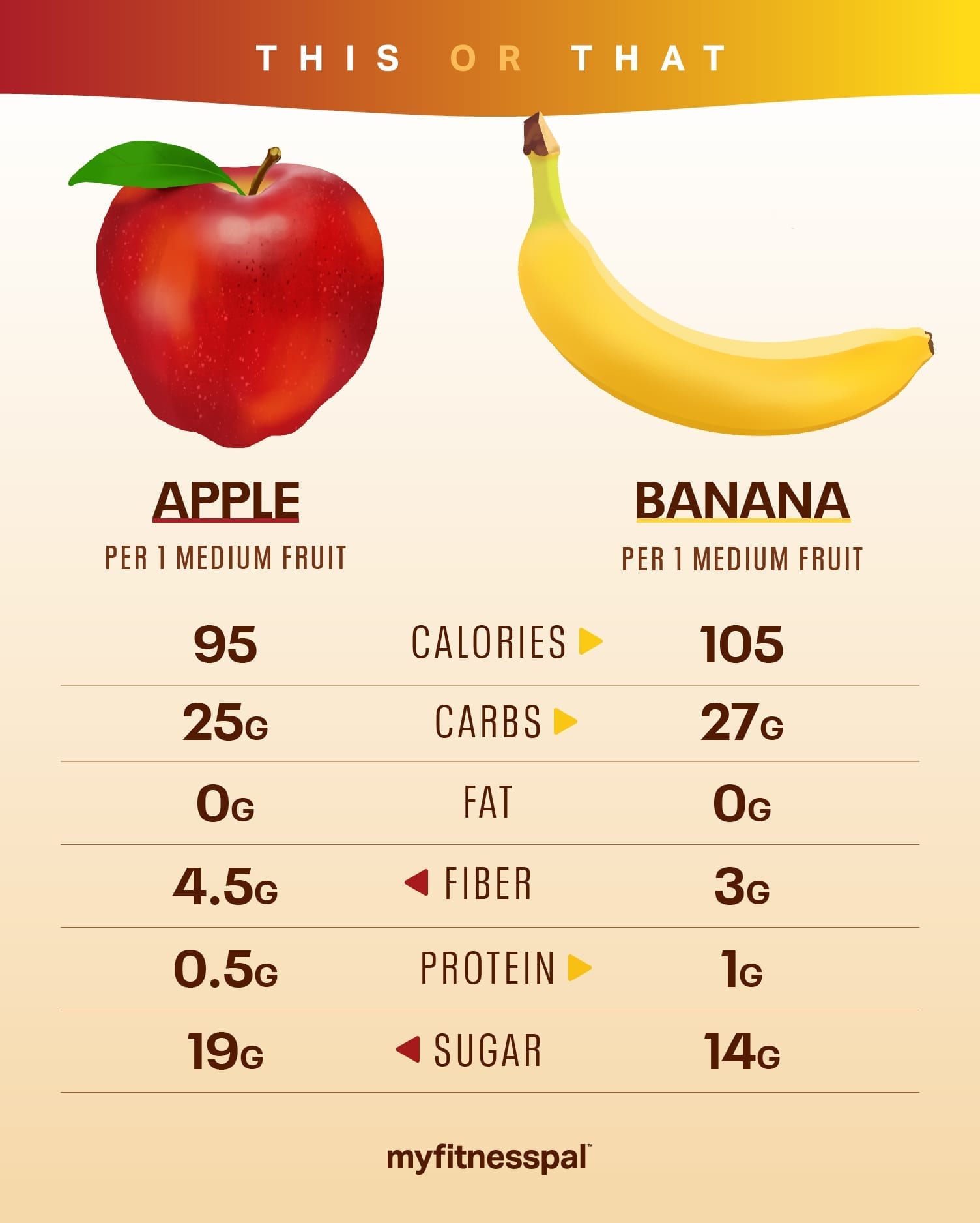
APPLES
Apples contain slightly more fiber than bananas, a nutrient that supports gut health and promotes satiety. The skin contains most of that fiber, which is why it’s beneficial to eat apples as they’re found in nature rather than peeling them. Apples are also a good source of vitamin C, which helps support the immune system. They could also help maintain good cholesterol. A study in the Journal of Functional Foods found otherwise healthy, middle-aged adults who ate an apple a day for a month experienced a significant drop in their LDL (“bad”) cholesterol levels.
BANANAS
Bananas are another good source of fiber and have slightly more protein compared to apples. They contain resistant starch, which the body is unable to digest and instead ferments in the colon. This helps promote healthy gut bacteria and slows digestion to help increase satiety. The amount of resistant starch in bananas decreases the riper they get, and is converted to sugar. That’s why ripe bananas taste sweeter. Bananas are also a good source of potassium, magnesium and manganese.
HOW THEY COMPARE
These two fruits are remarkably similar in most nutritional areas, with bananas taking a slight edge over apples in the vitamin/mineral department, and apples taking the slight edge in the fiber department. Because the fiber in bananas is a bit lower than apples and easier to digest, I often recommend them as a pre-workout snack. They’re a great source of quick energy and are usually well-tolerated.
A bigger difference between apples and bananas is taste and texture. I’d encourage using these factors when determining which one to eat. If you’re craving something crunchy and sweet, go for the apple. There are also several different varieties of apples and some lend themselves better to cooking (i.e., Granny Smith) while others (like Honeycrisp) are great for snacks. If you’re looking for something softer, starchier and a little easier to digest (especially pre-workout), go for the banana.
THE BOTTOM LINE
Fruit contains sugar, but eating fruit is not the same as eating candy or drinking a sugar-sweetened beverage. Just look at the nutrition facts above — fruits contain fiber, important for regulating blood sugar and avoiding the big spike that comes along with having something like a sugary beverage alone. Fruit also contains various vitamins and minerals, as well as potent antioxidants to protect cells from oxidative damage.
Apples and bananas are both good snacks (especially alongside a protein source like nut butter or Greek yogurt) and can also be used in sweet and savory recipes. Try these creative ways to use apples and these delicious recipes featuring bananas.
Remember, the sugar in fruit shouldn’t be feared, and it’s more important to take a holistic view of your diet. Eating lots of different fruits, vegetables, whole grains, beans/legumes, quality proteins and fats on a regular basis — without stressing too much about any one thing — is the best way to provide the body with the variety of nutrients it needs.
Discover hundreds of healthy recipes via “Recipe Discovery” in the MyFitnessPal app.
